Major solar flare reaching X3.1 erupted from Region 2192
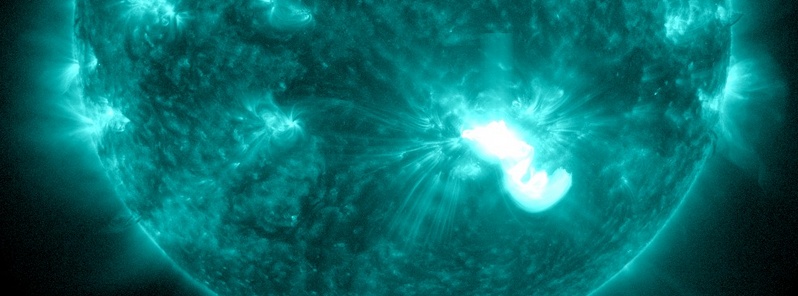
The largest region of the current solar cycle erupted with a major solar flare reaching X3.1 on October 24, 2014 at 21:41 UTC. The event started at 21:07 and ended at 22:13 UTC.
A narrow CME was associated with the flare and was observed in SOHO LASCO C2 imagery beginning at 25/21:48 UTC but was directed well south of the Sun-Earth line.
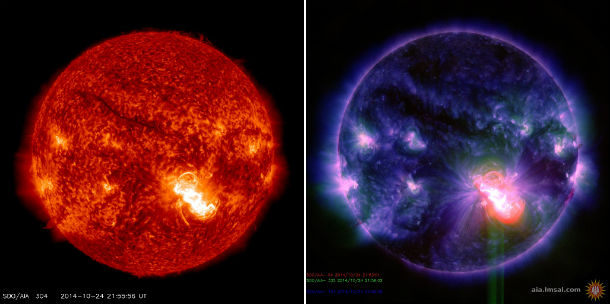
SDO's AIA 304 and AIA combined (094, 334, 195) view of X3.1 solar flare at 21:56 UTC on October 24. 2014. (Courtesy of NASA/SDO and the AIA, EVE, and HMI science teams.)
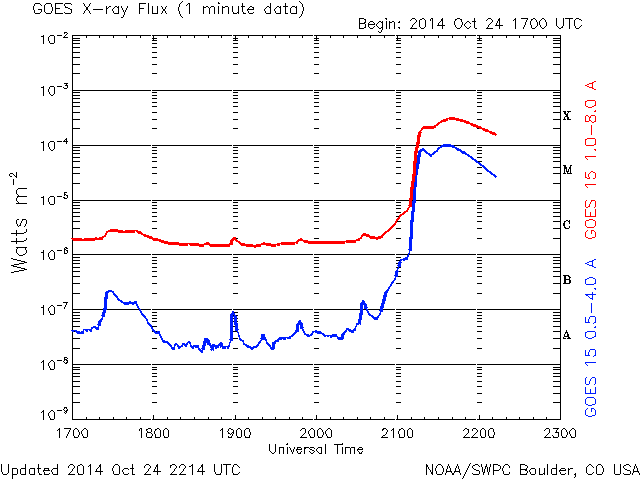
Radio Blackout threshold reached R3 (Strong) level that can cause wide area blackout of HF radio communication, loss of radio contact for about an hour on sunlit side of Earth and low-frequency navigation signals degraded for about an hour. The main communications impacts from this event are over the Pacific Ocean.
Space Weather Message Code: SUMX01
Serial Number: 106
Issue Time: 2014 Oct 24 2236 UTCSUMMARY: X-ray Event exceeded X1
Begin Time: 2014 Oct 24 2107 UTC
Maximum Time: 2014 Oct 24 2141 UTC
End Time: 2014 Oct 24 2213 UTC
X-ray Class: X3.1
Optical Class: 3b
Location: S12W22
NOAA Scale: R3 – Strong
Potential Impacts: Area of impact consists of large portions of the sunlit side of Earth, strongest at the sub-solar point.
Radio – Wide area blackout of HF (high frequency) radio communication for about an hour.

Region 2192 has 'beta-gamma-delta' magnetic configuration and is capable of producing more strong to major eruptions on the Sun.
NOAA/SWPC forecasters estimate an 85% chance of M-class flares and a 45% chance of X-flares on October 25, 2014.
.jpg)
SDO's HMI Active Region 2192 at 22:45 UTC on October 24, 2014. (Courtesy of NASA/SDO and the AIA, EVE, and HMI science teams.)
Active Region 2192 is the biggest sunspot group of the last two decades. This very complex group has an area of about 16 times the total surface area of the Earth.
SDO declared "Major Flare Watch", so the two calibration maneuvers SDO had scheduled for October 22, 2014 will be done in two weeks.
The event was not unexpected. Region 2192 was erupting before it appeared on the Earth side and continued to do so as it grew and rotated into perfect geoeffective position.
This is its third and strongest X-class solar flare after X1.1 on October 19 and X1.6 on October 22. It is also the sixth strongest solar flare of Solar Cycle 24.
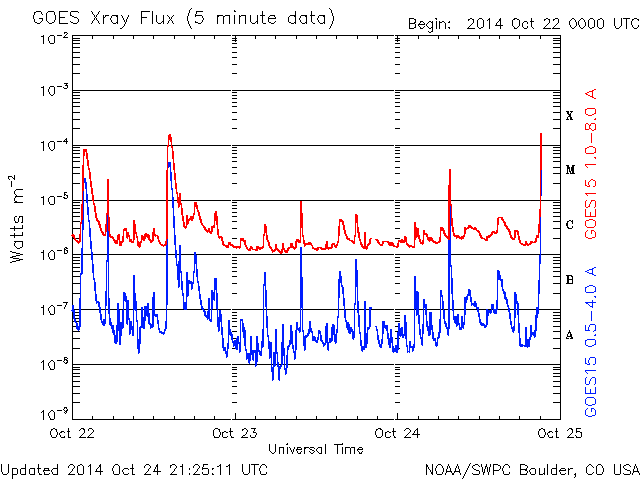
Sunspots
There are currently 5 numbered sunspot regions on the Earth side of the Sun. Region 2192 showed signs of separation between its leader and trailer spots yesterday although it continued to grow and remained magnetically complex. For several days in a row it is the sole source of flaring on the Earth side. All other regions on the disk are relatively stable.
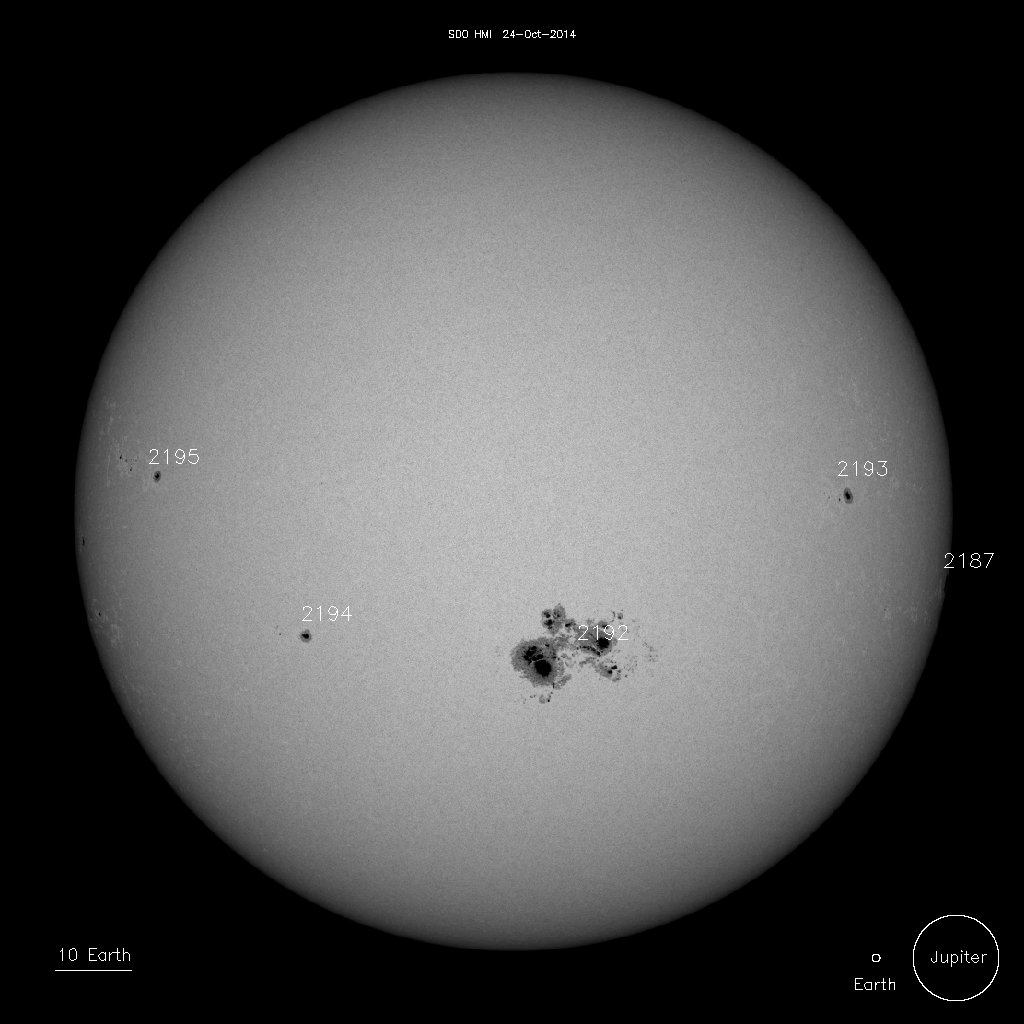
Sunspots on October 24, 2014. Image credit: NASA SDO/HMI
2187 – Alpha
2192 – Beta-Gamma-Delta
2193 – Beta-Gamma
2194 – Beta
2195 – Beta
Active Region 2192
October 24, 2014
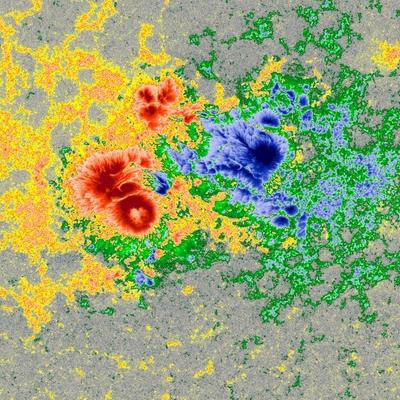
Image credit: NASA SDO / HMI
NOTE: This page will be updated…
- Check SWS for real-time alerts and updates.
Featured image: NASA SDO AIA 131 on October 24, 2014 at 21:21 UTC.

Commenting rules and guidelines
We value the thoughts and opinions of our readers and welcome healthy discussions on our website. In order to maintain a respectful and positive community, we ask that all commenters follow these rules.